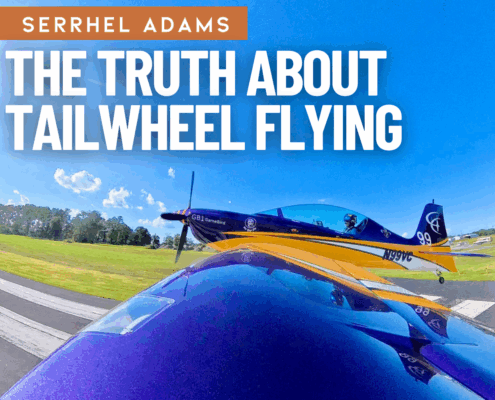
The Truth About Tailwheel Flying: Humility, Fun, and Warm FBO Cookies
OpinionTailwheel flying has a way of humbling even the most confident pilot—and that’s exactly why it’s worth pursuing. In this humorous and insightful piece, Serrhel Adams reflects on the lessons, surprises, and pure joy that come with conventional-gear flying. From Cub mornings to GameBird departures, he makes the case for earning your tailwheel endorsement and rediscovering the simple fun of stick-and-rudder flying.

Be Ready! Carbon Monoxide Could Happen to You
I was thereA routine self-training flight turned dangerously life-threatening when my cockpit carbon monoxide detector spiked to 300 ppm. Muscle memory and quick thinking got me safely back on the ground, but the experience was a wake-up call: CO in small GA aircraft can be silent, fast, and deadly. Here’s my story – and why every pilot should have a reliable CO detector in their plane.
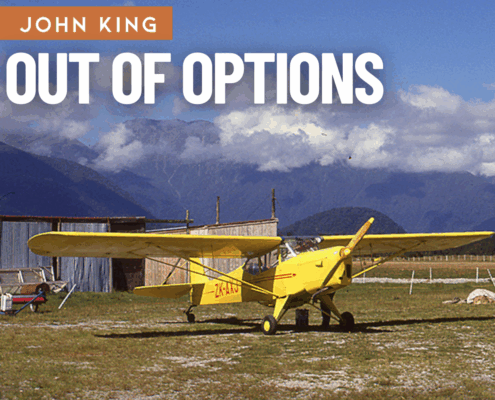
Out of Options—Pinned in the Pass
I Can't Believe I Did ThatWeather closing in. Terrain rising ahead. No room to turn back. In a narrow New Zealand valley, one pilot learns just how unforgiving a single wrong decision can be — and what it taught him about judgment and humility.
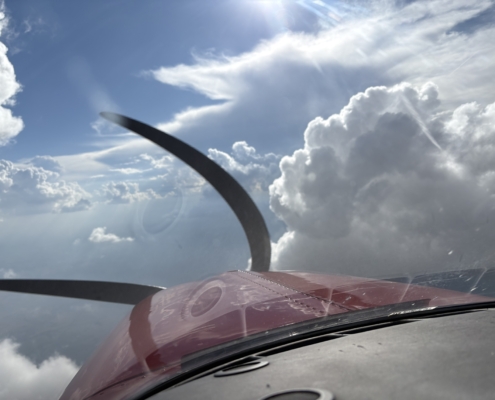
Friday Photo: Deviating for Thunderstorms
Friday PhotoFlying at 12,000 feet over St. Louis deviating around thunderstorms was like flying in the Canyons. Kudos to the Kansas Center facility for their help. It was a mostly smooth flight and a periodic aircraft wash.
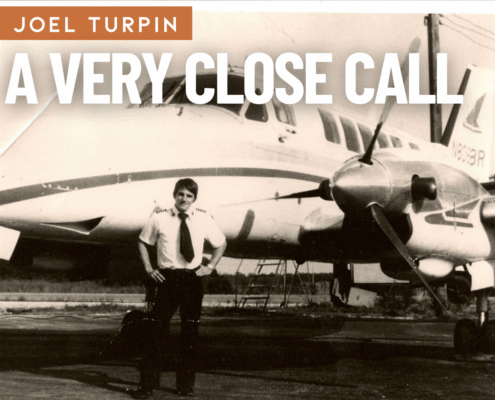
A Very Close Call
I was thereA routine Beech 99 takeoff from St. Louis in 1978 turned into a life-or-death struggle when the right engine exploded at 50 feet AGL. With icing in the clouds and an old terminal building directly ahead, Joel Turpin had only seconds to react. Decades earlier, he had wandered that same ramp as a wide-eyed 6-year-old; now, that building nearly ended his career—and his life.

Go-arounds don’t have to be hard
John's blogI was grumpy with my friend because I hate the obsession with instant analysis, and he made me participate in this ugly trend. I was grumpy because this accident hit a little close to home, killing a father who was flying his wife and daughter in a Cirrus SR22 (something I do often). But I was mostly grumpy because go-around accidents happen far too often—and they are eminently preventable. This is one problem we should be able to solve.

Fate, Freezing Rain, and a Captain’s Decision with Chris Schaich
PodcastWhen freezing rain turns a routine regional flight into a life-or-death approach, airline captain Chris Schaich must make a split-second decision: divert into worsening weather or press on toward a runway he can’t yet see. In this gripping conversation, Chris shares what it’s like to face severe icing in the Saab 340, what he learned from the experience, and how fate—and solid airmanship—helped bring everyone home.
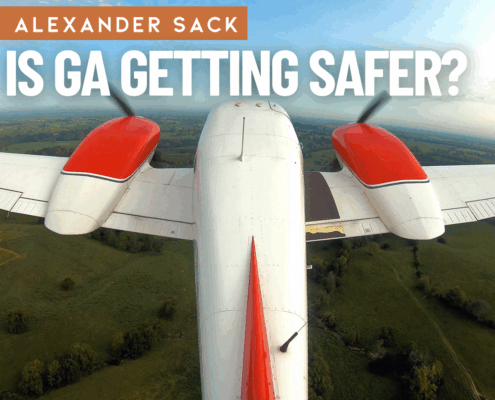
Is GA Getting Safer?
OpinionThe AOPA Air Safety Institute (ASI) recently released their 35th annual accident report. And the good news is that GA has never been safer. However, even though most of the press coverage has been mainly focused on the report’s positive high-level trends, the devil is as they say, in the details.

An Aeronca Chief Takes on the English Channel
My AdventureFlying a 1947 Aeronca Chief across the English Channel isn’t most pilots’ idea of a smart plan—but with careful preparation, it became the safest leg of the trip. Harry Karmel recounts the Cherbourg-to-Devon crossing, complete with dry suits, dead reckoning, and a memorable arrival at Bolt Head.
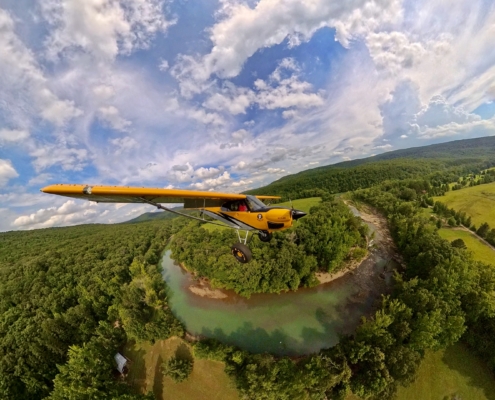
Friday Photo: Backcountry Airstrip
Friday PhotoPrecision flying in the backcountry can be important. Thankfully, Byrds provides plenty of room for practicing precision. The runway is long, the go around is forgiving, and the scenery is spectacular. Just check the DA before you go in heavy. There was plenty of runway, but I was spending the day trying not to waste any under my tires as I was working on spot landings.

Ice, Cookies and a Blinking Light
My AdventureNavigation for small aircraft in those days relied on a few methods. There were no digital computers or GPS systems, and radar coverage—especially in Canada and Alaska—was sparse. Pilots navigated primarily by following things on the ground (pilotage) or by plotting a course on a map and compensating for wind drift and magnetic variation. This method was called dead reckoning—a lousy term.
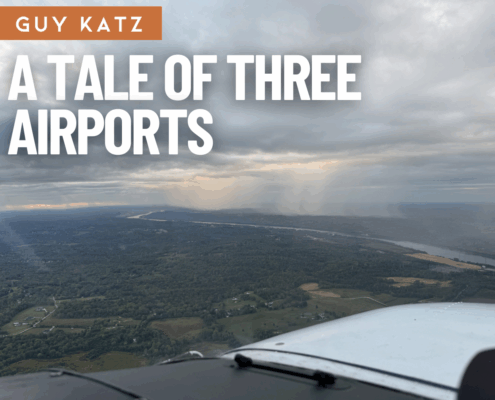
A Tale of Three Airports
I was thereThe forecast called for a thin but stubborn cloud deck, low enough that I doubted we’d make it into Stockerau. With that in mind, I lined up Plan B: Bad Vöslau (LOAV). Unlike Stockerau, Bad Vöslau offers an RNAV (GNSS) approach to RWY 31—a reliable “cloud breaker” that could give us a fighting chance to get underneath the layer. I called ahead before departure, and they reassured me: “Shouldn’t be a problem” (or “Passt,” as they said in Austrian-German).
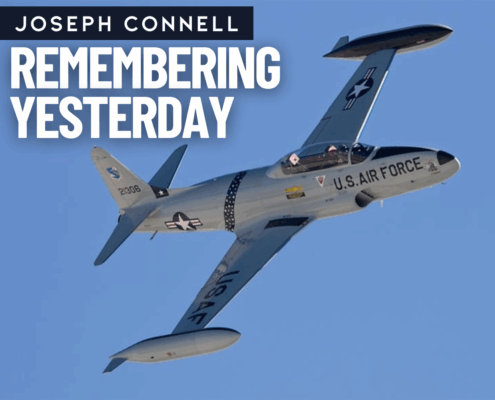
Remembering Yesterday—Reflections of Joseph Connell
I was thereI flashed back to late January of 1961. I was an Aviation Cadet at Vance AFB in Oklahoma, nearly five months away from receiving my commission and pilot’s wings. Our group, Class 61-G2, was the final class of the Aviation Cadet Program. That still, windless morning, I donned my oxygen mask and prepared to fly.
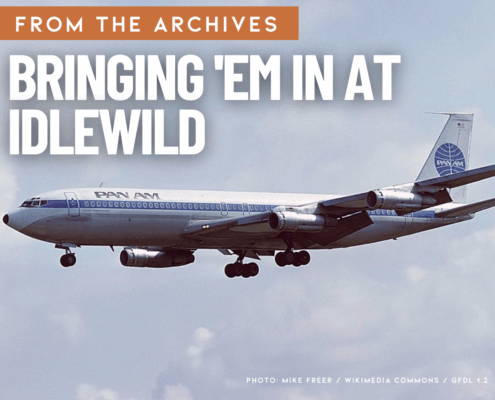
From the Archives: Bringing ‘Em in at Idlewild
Air Facts ArchivesA classic from the Air Facts archives: Wolfgang Langewiesche, author of Stick and Rudder, takes readers inside the fog-shrouded operations at New York’s Idlewild Airport—today’s JFK—in 1954. With vivid detail, he explains how radar, radio, and skilled controllers brought transatlantic airliners safely to the runway in any weather.

The Power of Mentorship: How One Pilot Rekindled My Passion for Flying
I was thereOne afternoon, while my wife took a break, I went on a solo exploration. It was during this time that a chance encounter would change everything. I walked by a Lancair covered in sponsor logos, with large numbers on the tail. I noticed several other airplanes with similar numbers. I had stumbled into parking for the AirVenture Cup Race.
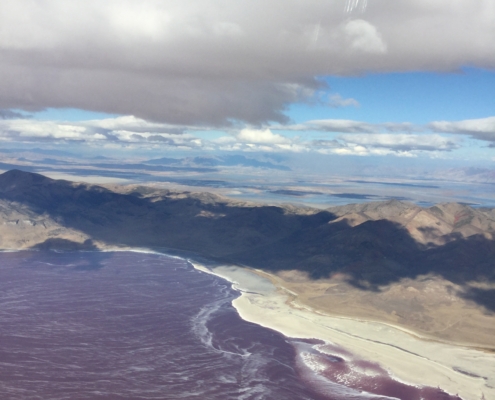
Friday Photo: The Color of Salt
Friday PhotoCruising toward Ogden on a smooth afternoon, I noticed the Great Salt Lake take on an unexpected shade of purple beneath me. The sun, the salt, and the sky seemed to blend together in a way I’d never seen before.

Asserting a Captain’s Authority
I was thereThere was a flurry of activity all over the airplane—into which strode Mr. Federal Aviation Inspector Extraordinaire. He proceeded to come into the cockpit and inform me, in no uncertain terms, that this was going to be a “line check” to East Midlands. I asked if he was qualified on the 737, to which he huffily replied, “I certainly am. I am type-rated on the 737.”

The Day Everyone Crashed a Glider
I was thereOne of my first customers, a kid I’ll call Joey, was my youngest so far but also the most troubling. Maybe ten years old, he acted more like thirty-five, with a sneering confidence and an air of having already seen it all. In my cynical imagination, I figured I’d be hearing about Joey again—maybe later that month—when he’d make headlines for stealing the family car and driving it to Taco Bell propped up on sofa cushions.

Understanding the 70-50 Rule for Takeoff Performance
What I Know About...The so-called 70-50 rule has popped up a few times recently on the internet. I thought it would be useful to look at this rule, explain how to interpret it properly, point out some less-helpful interpretations, and share a bit of history behind it. I use the rule frequently myself—though not rigidly.

From Sim to Reality: How a Piper PA-28 Changed Everything
I was thereWe started talking about airplanes, and I told him I liked flying but had never really flown. He mentioned that he had a YouTube channel—Josh’s Aviation Adventures—and had one of his videos playing on a laptop. Then he said something that changed my life. He put his hands on my shoulders and said, “I’m bored. You want to go fly?”
